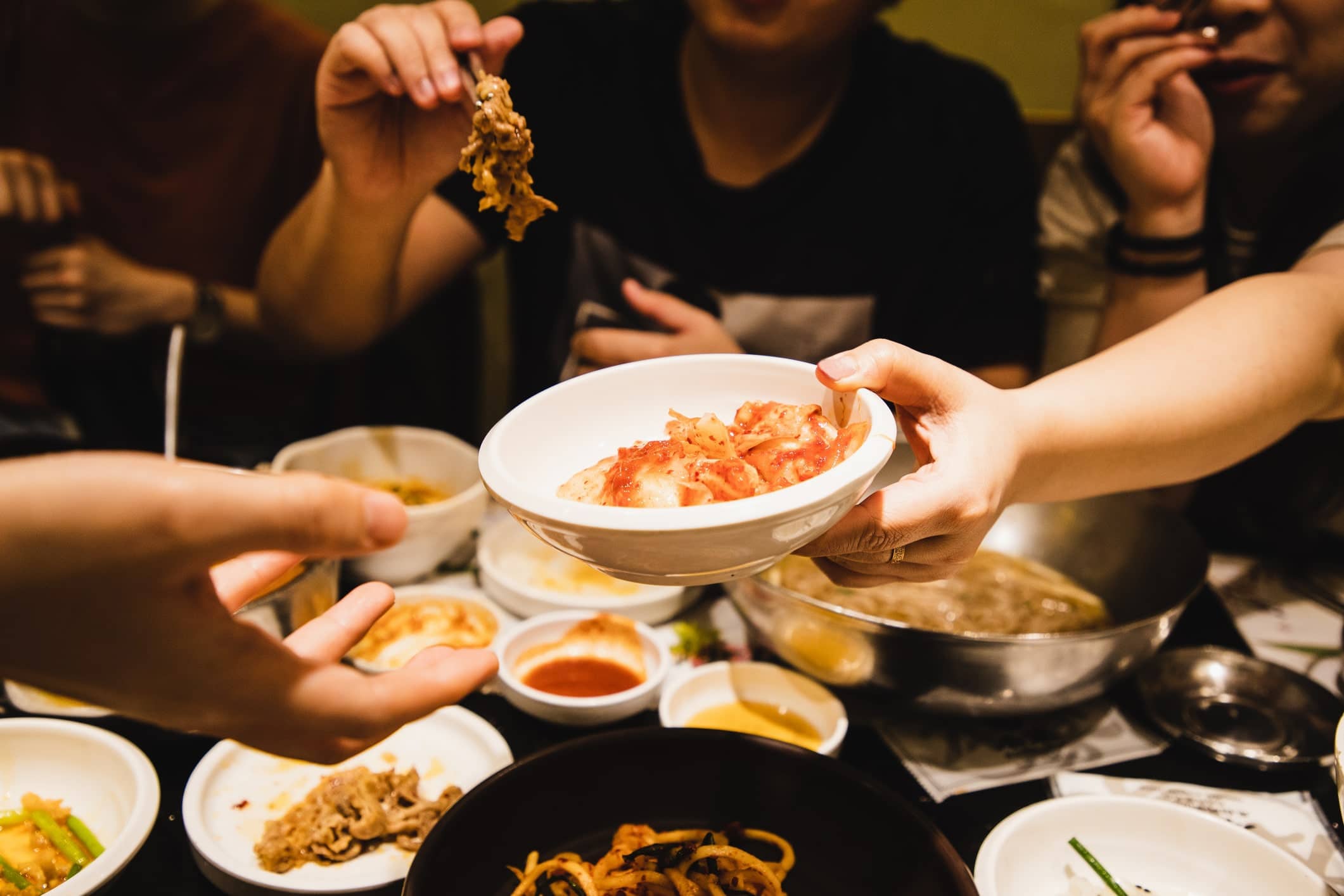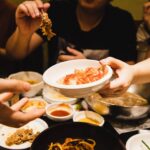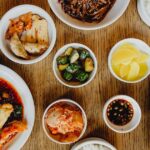Check Out Amazons Huge Range Of Korean Kitchenware

A History of Korean Cooking
Korean cuisine is rapidly gaining popularity around the world, with its unique blend of bold flavors and diverse ingredients. The cuisine is deeply rooted in traditions that date back thousands of years, making it a fascinating topic for foodies and history buffs alike. From kimchi to bibimbap, Korean food has something for everyone. In this blog post, we will delve into the history of Korean cooking and discover the origins of some of our favorite dishes.
Join us as we explore the rich heritage behind Korean cuisine and uncover the secrets to creating delicious Korean dishes at home.
Chinese and Japanese Influences on Korean Cuisine
Korean cuisine has been shaped by a variety of influences, including the Chinese and Japanese invasions during the fourteenth through twentieth centuries. These culinary influences gave rise to a distinct Korean hybrid cuisine, which combines elements from both cultures while also incorporating native Korean ingredients and flavors. Traditional Korean cooking methods, such as fermentation and preservation, also play a significant role in shaping the country’s cuisine. One of the most iconic Korean dishes, Kimchi, is a testament to the importance of preservation in Korean cooking. Additionally, the abundance of side dishes, known as banchan, is a crucial aspect of Korean meals, and the use of chili peppers, garlic, and scallions for flavoring sets Korean cuisine apart from its Chinese and Japanese counterparts. Overall, the various influences on Korean cuisine have created a unique food culture that is distinct from those of China and Japan.
Traditional Cooking Methods in Korean Cuisine
Korean cuisine is unique in its use of traditional cooking methods. The absence of baking and frying in ancient Korea led to the popular use of fermenting, boiling, blanching, seasoning, and pickling in Korean cooking. This has resulted in many unique dishes that are still loved today, such as kimchi, which is prepared through fermentation. In addition, Korean cuisine emphasizes the importance of preserving food for long-term consumption, which is evident in its use of pickling and salting. These traditional methods have been passed down through generations, making Korean cuisine a source of pride for Koreans and a unique culinary experience for everyone. By exploring the cooking techniques used in Korean cuisine, one can appreciate the depth of culture and history that goes into each dish.
Abundance of Side Dishes (Banchan) in Korean Meals
Another significant aspect of Korean cuisine is the abundance of side dishes, also known as banchan, that accompany every meal. From humble family dinners to lavish ceremonial feasts, banchan is a crucial part of Korean dining culture. These small dishes, often filled with pickled vegetables, meats, and seafood, not only add flavor and texture to the meal, but they also support digestion and replenish the body with essential nutrients. In combination with steamed rice, soup, and kimchi, banchan completes the meal composition of a traditional Korean feast. Visitors to Korea will find that the number of side dishes varies according to the formality and occasion of the meal. Some restaurants and homes offer three, five, seven, or nine different side dishes, depending on the host’s preference. It’s no wonder that Korean cuisine is famous for its complexity and diversity, thanks in no small part to the wide variety of banchan offered with every meal.
Fermentation and Preservation in Korean Cuisine
Korean cuisine is renowned for its unique methods of fermentation, which have been used for centuries to preserve and enhance the flavors of food. Fermentation remains an integral part of Korean cooking, and it is closely linked to traditional cooking methods such as pickling and salting. Kimchi is perhaps the best-known example of Korean fermented food, but there are many others, including jang and jeotgal. These fermented dishes form an important part of Korean meals, which typically feature a wide variety of side dishes, or banchan. The tradition of fermentation and preservation in Korean cuisine has its roots in early agricultural societies, where food had to be stored for long periods of time. Today, these traditional methods of preparation are still highly valued and continue to play a significant role in Korean food culture.
Kimchi: A Staple in Korean Cuisine
As discussed in previous sections, Korean cuisine is rich in history and unique in its flavors and techniques. One of the most well-known and beloved aspects of Korean cooking is kimchi. This spicy, fermented side dish made from a variety of vegetables, particularly cabbage, has been a staple in Korean meals for generations. It is often present at every meal, from breakfast to dinner, and is considered a symbol of Korean culture. The fermentation and preservation techniques used in making kimchi also reflect the importance of food preservation in Korean cuisine. Kimchi is not only enjoyed for its delicious flavor but also for its health benefits, as it is full of probiotics and vitamins. Overall, it is clear that kimchi plays a crucial role in Korean cuisine, and its popularity and significance show no signs of waning anytime soon.
Importance of Agriculture in Korean Cooking
Korean cuisine has always placed great value on agriculture. Ever since the prehistoric era, Korean farmers have cultivated grains like rice and barley, as well as legumes and fish, to provide protein. Agriculture has certainly played an important role in the evolution of Korean cuisine, and the abundance of fresh vegetables and herbs available in Korea has allowed chefs to create healthy and flavorful dishes. This includes the famous Korean side dishes or banchan which use many vegetables and herbs. Furthermore, the importance placed on agriculture in Korean cooking has not only influenced the food but has also led to many policies including the invention of space food and the government’s focus on food security. It is evident that the Korean people have always understood the importance of agriculture and the impact it has on their cuisine, making it a crucial element in Korean cooking.
Temple Cuisine in Korea
Moving onto the topic of Temple Cuisine in Korea, you might be surprised to learn that it has been around for well over 1,000 years. This type of cuisine originated in Buddhist temples of Korea and has always been an important means of practice for Korean Buddhist monks and nuns. Today, it is gaining popularity as a part of South Korea’s answer to culinary tourism. Temple food is known for being eco-friendly, meatless, and made from locally-sourced vegetables. It is a ‘less is more’ cuisine that emphasizes simplicity and healthy eating. In fact, many of the core principles of Korean temple food are more modern than ever, making it a perfect fit for today’s healthy living and slow food movements. So, next time you’re looking for a unique and healthy dining experience, consider giving Korean temple cuisine a try!
Social and Religious Influences on Korean Cuisine
The social and religious influences on Korean cuisine are vast and significant. Koreans believe that food is not only necessary for nutrition, but it also plays a crucial role in building emotional bonds, community relations, religious practices, and even politics. Koreans take great care in the preparation of their food, as they believe that all diseases come from what they eat. Thus, they aim to create dishes with the perfect balance to achieve health benefits holistically. The strong belief in yin, yang, and the five elements (wood, fire, soil, metal, and water) also influence the taste and presentation of food. As a result, Korean cuisine has become a symbol of Korean culture and showcases the influence of social trends, religion, and traditions. Even in the diaspora, Korean food remains an object of nostalgia, longing, and an essential part of their cultural heritage.
Location and History of Korean Cuisine
The location of Korea has had a significant influence on its cuisine. Korean food has evolved over centuries of social and political change, inspired by the agriculture and seas surrounding it, namely the East China Sea and the Sea of Japan. The Korean people have always believed that food and medicine are intertwined, and this is reflected in the use of diverse ingredients and cooking methods in Korean cuisine. Living with high population density in the Korean peninsula has led to the importance of communal meals, and the historical tradition of serving meals with rice, broth dishes, kimchi, and banchan (side dishes) to be consumed at the same time. Moreover, the ideal location for Jangdokdae, a traditional Korean storage facility for fermented foods and condiments, is an area with sufficient sunlight and wind exposure. All of these factors have contributed to the unique flavors and cultural significance of Korean cuisine.
Spicy Flavors in Korean Cuisine and the Role of Chili Peppers.
Korean cuisine is known for its bold and spicy flavors, and one key ingredient that plays a major role in achieving this is chili peppers. Korean red chili peppers, or gochugaru, are traditionally sun-dried and have a unique spicy, sweet, and slightly smoky flavor. Spicy dishes like tteokbokki and buldak are popular in Korean cuisine, and chili peppers are used in a variety of preparations, including marinating poultry and adding heat to vegetable dishes. While chili peppers did not become widely used in Korean cuisine until the 18th century, their importance in creating the bold flavors that Korean cuisine is known for cannot be overstated. The use of chili peppers also underscores the importance of Korea’s geographic location, as the country sits at a crossroads of culinary influences from China, Japan, and Southeast Asia. This combination of cultural influences, along with the use of chili peppers, demonstrates the complexities and depth of Korean cuisine.



